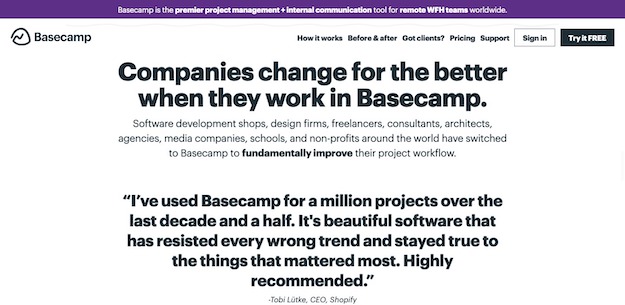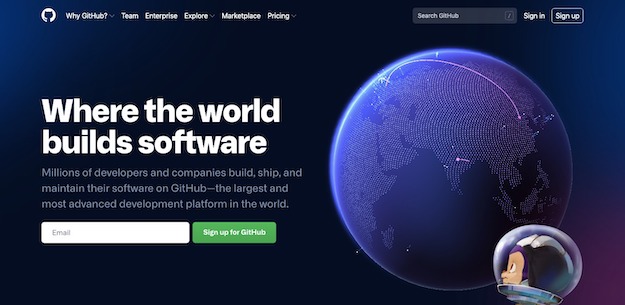Most startups raise funds to gain a foothold in the market. But funding itself doesn’t guarantee the success of any business. The data shows that the failure rate of startups is almost 90%, most of which are funded by investors. One of the primary reasons for failure is business running out of money. Inexperienced startups find it challenging balancing expectations and performance. Investors expect an amount of growth for which companies have to meet strict deadlines. Many budding companies, therefore, choose to bootstrap. Bootstrapping is a concept to start a firm without venture capital. Here the entrepreneur invests personal finances and resources and starts from scratch. The best part is bootstrapped startups shape teams that put cumulative efforts to make the firms profitable. In financial aspects, bootstrapped startups have better goal setting, cash flow, and revenue generation than their funded counterparts. Here is the list of a few bootstrapped startups that are still standing firm in the world of business.
1. Shutterstock

In 2003, John Oringer, a computer developer and amateur photographer, created an online photo marketplace. Shutterstock was born out of an idea to provide people with stock images that any entrepreneur can use. He uploaded 30000 photos initially that people can download at $49. With the increase in demand, he added other content creators who can provide an unlimited supply of photographs, videos, and even music. Contributors upload their contents and get a royalty whenever a subscriber downloads them.
With 200 million photos and 11 million video clips, Shuttershock has one of the highest collections. This company is worth 2.5 billion dollars by 2013 and is firmly holding its ground. The sole reason for this success is a lean startup supported by bootstrapping.
2. Mailchimp

Since its inception in 2001, Mailchimp has never accepted any venture capital. What started as a side-business by Ben Chestnut, Dan Kurzius, and Mark Armstrong is generating around $700 million by 2019. This email marketing service helps organizations to manage their customer’s email activity.
Mailchimp had initially been a paid service but added a freemium option in 2009. It then saw a massive growth from 80000 customers to 4.5 lakh in a year. In 2016, they made $400 billion with just 550 employees. In this single year, their user base grew by 30%. Adding the right features and catering to the customer’s need, Mailchimp has never run out of cash and is flourishing with 11 million active customers among a total audience of 4 billion.
3. Basecamp

This project management app was initially a web development company called 37signals. It has launched SaaS solutions called Ruby on Rails for internal use and then for other remote companies. The Basecamp app was the first product made by Ruby. It became so successful that in 2014, the company replaced its original name with the product name.
Valuing $100 million in 2019, the company offers cloud-based software that brings together internal communications within a small business and client’s work at the same platform. A great example of bootstrapping, its founders credit the company’s success to the lack of money that forces them to build projects that work for them.
4. GitHub

With 56 million developers, GitHub lets millions of companies build, manage and maintain their software in their platform. The founders Wanstrath, Werner, Chacon, and Hyett, built this tool in 2008. It offers its basic service for free but charges professional and enterprise services.
Having more than 190 million software repositories, GitHub bootstrapped for an initial four years through word-of-mouth publicity. In 2012, GitHub had raised $100 million from Andreessen Horowitz, citing they have taken this step as their partner shares their vision. In 2018, Microsoft acquired this largest source code host and already profitable business for $7.5 billion.
5. TechCrunch

It is a technology website that publishes online news. Founded by Mike Arrington and Keith Teare, this company transformed tech-blogging into journalism. The USP of TechCrunch is the high-quality content about entrepreneurship and the latest happenings in the tech world. It has also created an online encyclopedia that has information about millions of startups and entrepreneurs. This database became self-sufficient enough to become a private entity in 2015.
Every year this company hosts an annual technology conference, TechCrunch Disrupt. This platform helps entrepreneurs get insights from startup owners and connect investors with the founders. In 2010, AOL acquired TechCrunch for approximately $25 million, with Arrington holding the maximum stake.
Conclusion
When you bootstrap an idea, you become conservative with your money and focus on profit-making. As initial investment is low, you spend every penny wisely. As a founder, you spend time creating products that customers love and generate profits. The above examples show that creating huge companies doesn’t require investor’s money. All it needs is the freedom to run your company with complete ownership that bootstrapping can provide you.
